But while the town lacks much population and many facilities, it has an abundance of hills and scenic vistas. I only experienced a small sample of this, in my 1.5 miles to Mud Pond Pass.
|
My last town for today was the very tiny town of Granby. Granby has the same area as most of Vermont's towns, but it has a very small population. The town's post office is smaller than my living room; the town office, the school, and the church are each small one-room structures. Granby Central School is one of the few remaining one-room school houses in Vermont. But while the town lacks much population and many facilities, it has an abundance of hills and scenic vistas. I only experienced a small sample of this, in my 1.5 miles to Mud Pond Pass.
0 Comments
Answer: To get to the Crossbills feeding on seeds.
The Wenlock section of Ferdinand is a most interesting section of the Middle of Nowhere. This area is a state deer yard -- it's a critical over-wintering area for deer -- and the area is also good for spotting White-winged Crossbills. I never did find the trail into Moose Bog (what a creative name), but the roadway offers some nice views of wetlands and woods, and sometimes of interesting birds as well. On this one day, I could hear Crossbills up in the trees but couldn't get a good view of them. Continuing along the highway, I was soon joined by this lovely Gray Jay, who followed me for many tens of yards; he was very curious and not at all afraid of me... as you can see from these photos. Eventually 'we' came around a slight bend in the road, and there were 2 crossbills and a Pine Siskin, pecking seeds out of the cracks in the center of the highway. Fortunately there weren't any logging trucks roaring thru, and I was able to snap this photo of the 3 before they flew off. On an earlier section of the same road, I heard a strange rumbling from a bridge up ahead. It was a low bridge over a creek, and I'd planned to survey the wetlands on either side to search for raptors or even moose. But this strange rumbling kept coming from the bridge and from its surroundings. It got louder as I approached. It was starting to give me the creeps. Finally, when a truck came over the bridge, out flew about two dozen pigeons!! It was their coo-ing, amplified by the acoustics of the chamber under the bridge, that was so eerie. Hah! Once I knew what was the source of the creepy sound, everything fell in place. Imagine it in your own mind.... The sound of two dozen pigeons talking in uni amongst themselves, in a 20-foot wide box culvert under the highway, with a fast-flowing creek providing just enough distortion to hide the true sound of the cooing yet reflecting and amplifying the collective cooing. Then put yourself in late afternoon as the sun is getting low, you're out on an empty stretch of highway, you've just been followed by a Gray jay and startled by a Sage Grouse, and then you hear this ever-growing "Whooo?" "Whoooo?" Can't help but laugh, in retrospect! My checklist for a not-so-boring afternoon in Ferdinand: Sage Grouse Rock Pigeon Gray Jay Blue Jay American Crow Common Raven Black-capped Chickadee Red-breasted Nuthatch White-breasted Nuthatch Belted Kingfisher Pine Siskin White-winged Crossbill When I started this project in May 2012, I allowed myself to grandfather in a number of towns that I had birded already that year; 16 towns in all. Town # 1 on my resulting list of the 251 turned out to be Leicester, which I had passed thru in earliest January.
What made Leicester interesting - and worthy of including as a surveyed town - was a flock of Snow Buntings that caught my eye as I was heading west from the town center. Turns out there were over 100 in the flock, and they were very skittish. They never stayed on the ground for more than 30 seconds; I'm not sure if it was my presence or something else, but they never rested. I managed to capture a few photos of them that were in relatively good focus, and below is one of them. On my way back towards Brandon, I encountered an amazing 'house' that had been constructed/re-constructed from a barn and silo. How cool would it be to have that top floor for a reading room or astronomy observatory?!? My checklist for Leicester: Snow Bunting White-breasted Nuthatch House Sparrow Today I surged passed the halfway point in my 251 town project, as my son and I surveyed towns 125, 126, 127, 128 .and 129. We had planned to visit the Hildene estate of Robert Todd Lincoln in Manchester, then cruise down to Bennington and take in the Revolutionary War sites around the Bennington Monument and museum, but the day was just too hot and humid for spending that much time in the car and walking in the sun. Instead, we headed for home, but over the mountains where it would be cooler. And I would be able to survey a few towns along the way.
I still need to do an all-day expedition to finish off the southwest corner of the state: Vernon, Bennington, Shaftsbury, Glastenbury, Arlington, Danby. Glastenbury is the challenge in this group, as there is only one road into the town from the west, and it can only be accessed from ShaftsburyAnd then there's the over-the-mountain towns that we drove thru but did not survey today: Andover, Weston, Chester. Claudia and I visited Hildene in early Spring, on a cold and rainy day. Today, the weather was much finer, and the formal gardens were in full bloom. The framing of the gardens is northern privet, not boxwood, and these are original plants. The Lincoln women apparently liked peonies, and the specimens in these gardens were beautiful. Abraham Lincoln's son, Robert Todd Lincoln, had the home built in 1908; at the time he was running the Pullman Railcar Company. The last of Abraham's daughters died here in 1978, and the estate was eventually taken over by the Friends of Hildene. In addition to the restored home and outbuildings, there is a fully restored Pullman luxury sleeper car under its own shelter, and a working goat farm on the property. While this wasn't an ideal location for birding, there was a reasonable variety seen and heard on the property. There are several miles of trails to explore, but that will come another time. Checklist for Hildene at Manchester: Red-eyed Vireo Eastern Phoebe American Crow Black-capped Chickadee Brown Creeper Tree Swallow American Robin Ovenbird Common Yellowthroat Yellow Warbler Pine Warbler 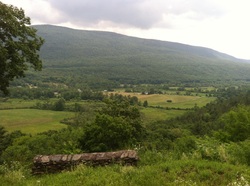 The Hildene mansion sits on the bluff overlooking the Battenkill river valley; if this were in medieval Europe, the estate would certainly have been fortified with walls, moats, and towers... it's a very defendable location. The grounds and gardens (above) go right up to the cliff face (above, at right; at left), and provide spectacular views. there was always a refreshing breeze too. Some of my earlier towns were grandfathered into the 251 Town Birder project because they were visited earlier in 2012, had interesting species, and/or were in far-flung corners of the state. Swanton was one that met all three conditions, and provided a unique birding experience.
The Mississquoi National Wildlife Refuge offers limited road access and hiking opportunities, but good boating access -- in summer; options are more restricted for cars, but greatly expanded for hiking or snowshoeing, in winter.. When my friend Hannah Goldman and I visited in January, we were hiking on the snow-covered Black Creek trail when we noticed animal tracks out on the frozen creek. Once we assured ourselves that the ice was thick and fast, we decided to follow the creek downstream on ice, rather than on the trail. Tracks abounded -- deer, mice, and a few predators too. When we finally reached the mouth of the Black Creek, where it empties into Lake Champlain, we moved into the shadows of the trees to observe any activity out on the lake. I soon noticed a large raptor over the lake, which turned out to be a Rough-legged Hawk; RLHAs come down from Canada into the New England area in wintertime, so we birders are always glad to see these northern visitors. Hannah and I watched the hawk soar and then hover for several seconds, before diving after some prey animal. I knew that this species was the only hawk that generally hovered over prey - like a Kestrel does - but this was the first time I had ever witnessed it first-hand. Checklist for Swanton: Red-tailed Hawk Rough-legged Hawk Hairy Woodpecker Common Raven Black-capped Chickadee During my daylong expedition to the Champlain Islands last June, I made a side detour to log an eBird survey in the town of Isle la Motte. I'm a history buff, so I had to explore Isle la Motte. Everything about Vermont began here. Samuel de Champlain landed here in 1609, and later the French established the first European settlement in Vermont in 1665. Champlain had 'discovered' the lake and named the mountains to the east the "Verts Monts", from which our state derives its name. The town claims that the small cannon outside the town's offices came from that original settlement. Although I drove the entire length of the island, I chose its northernmost point as my survey location. Here, where the causeway meets the island, is the Burying Yard, which is both scenic and significant. Checklist for Isle la Motte: Great Blue Heron Ring-billed Gull Belted Kingfisher Warbling Vireo Black-capped Chickadee Red-winged Blackbird Song Sparrow 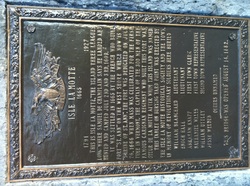 This is Isle al Motte, "the island three leagues long" where Samuel de Champlain says he landed and hunted and camped, July 2nd and 3rd, 1609. It was settled in 1665 by the French, who built Fort "St Ann" on the west shore, where now is a "Shrine of St Ann". The fort was dedicated on July 26, 1666 when mass was celebrated for the first time in Vermont. The captain of the 300 men of the famous Carignan Regiment who built this fort was Sieur de la Motte, after whom this island was named. This tablet on Burying Yard Point was erected by the Isle la Motte Historical Society and the Town, in memory of Revolutionary soldiers buried here. William Blanchard Lieutenant Enoch Hall Lieutenant Abraham Knapf First Town Clerk Nathaniel Walls First Town Representative William Uttley Second Town Representative Jesse Welder Others Unnamed This bridge was opened August 14, 1882 Barre was built on granite and built by granite. The area of Graniteville sits high on a granite mound overlooking the valley; the mound is the eroded remnant of the solidified magma chamber of Mesozoic volcano.
Several large quarries have been excavated over the years on the high ground of Graniteville; both the flooded, disused quarries, and the active ones, are massive holes in the earth. Surrounding the pits are mounds of granite blocks, which pile into the back yards of many houses. The granite in these mounds could certainly extend the life of the Rock of Ages Company by providing curbing for hundreds of miles of roads. My survey area was on the lower slopes of the mound, where Graniteville Road descends from the Rock of Ages Visitor Center down to the town's cemetery and recreation area. I have seen several cemeteries in Barre City and Town, and they are all completely done in granite. Marble is totally absent, although it is equally prevalent in southwest of the State. Checklist for Barre Town: Red-eyed Vireo Warbling Vireo Eastern Phoebe Blue Jay Black-capped Chickadee Downy Woodpecker -- female entering an active nest hole Brown Creeper Ovenbird Northern Parula Black-throated Green Warbler Pine Warbler Common Yellowthroat American Robin Red-winged Blackbird Song Sparrow If you want to see Osprey, then Sandbar WMA is the place to go. My nephew and I walked from the Access Area parking -- at the far end from the bustling State Park -- along US-2 for half a mile. When the traffic wasn't whizzing passed us at 55mph just 6 feet away, we were treated to several nice views of osprey... on their nests, perched nearby, and soaring around the delta. The only other bird of interest on that walk was a Great Egret, grooming itself in a dead tree. We observed 9 nests and 10 Osprey along the causeway; I'm sure we would've seen more had we walked the entire causeway; five of the nests were observed from the car as we too whizzed along the highway towards South Hero.
The Sandbar WMA would be much more birder-friendly if there was a pathway or boardwalk along the lower edges of the causeway. This would allow birders to walk the entire length, safely separated from the whizzing traffic, and with a better view of the wetlands. A screened bird blind could also be constructed -- jutting out just beyond the edge of the trees -- so that visitors could observe the osprey in the vicinity. Osprey are very sensitive to the presence of intruders -- which we clearly were -- so screening would be recommended to reduce their visibility of people on the walkway. There have been a number of locations around where Common Gallinule have been reported, this Spring. Unfortunately, I've been skunked at all of them. My latest effort also allowed me to survey yet another town.
The area where the Gallinule had been reported was Brandon Swamp, also known as Long Swamp. This is about the only place where the threat of mosquito-born Eastern Equine Encephalitis is so great that the state sprays mosquito insecticide. So, armed with an extra covering of insect repellant, the Gallinule quest continued. I was accompanied yesterday by my nephew, Andrew McPhillips, who is a sophomore at Castleton State College. We had a great chat while walking slowly along VT-73, stopping frequently to listen or observe. Andrew spied a Red-tailed Hawk soaring over the marsh, and it was being harassed by 4 Red-winged Blackbirds. One particularly irritated RWBL tagged the hawk multiple times; you couldn't help but feel sorry for the hawk because it could neither get away fast enough nor turn on its aggressors. Andrew and I were heading up into the Champlain Islands this day, so we turned around and returned to the car after a half mile. While we did not hear or see a Gallinule, we did hear a Virginia Rail oinking in the tall cattails, we found a turtle's nest that had been ransacked and the eggs consumed, a flattened and sundried milk snake, an intricately-patterned moth, and a Yellow-billed Cuckoo. Not a bad walk. My checklist for Brandon: Red-tailed Hawk Virginia Rail Northern Rough-winged Swallow Warbling Vireo Red-eyed Vireo Marsh Wren Mourning Dove Blue Jay American Crow White-breasted Nuthatch Least Flycatcher Blue-gray Gnatcatcher Belted Kingfisher Yellow-billed Cuckoo Veery American Redstart Yellow Warbler Baltimore Oriole Common Grackle Red-winged Blackbird Son |
AuthorI've been a life-long 'naturalist' -- interested in every aspect of the natural world. I began birding in the early 1990s, and have been a serious birder for over two decades. Archives
March 2021
Categories |
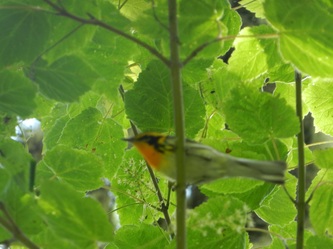
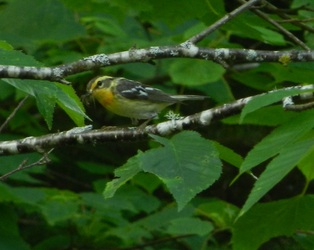
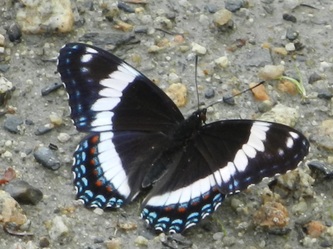
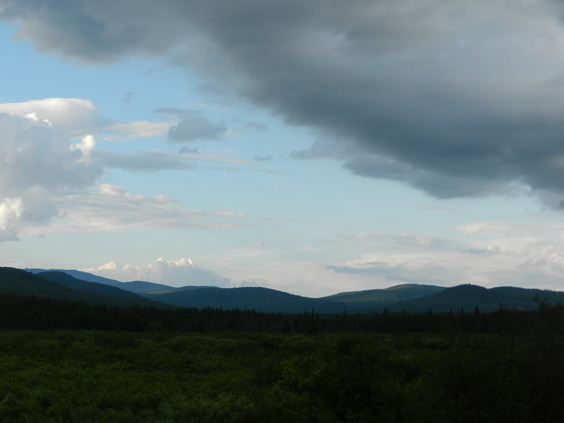
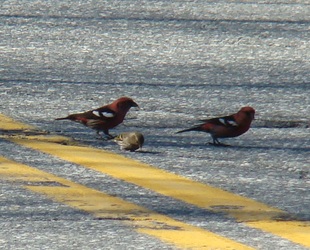
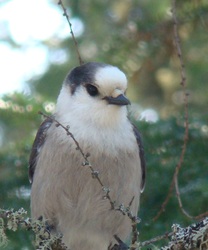
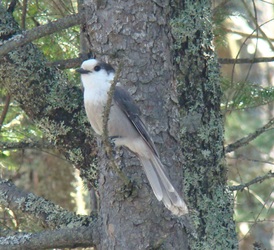
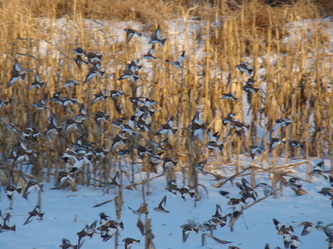
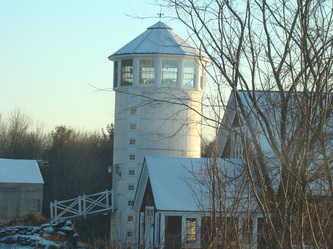


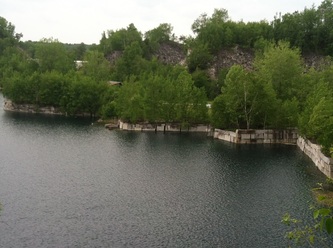

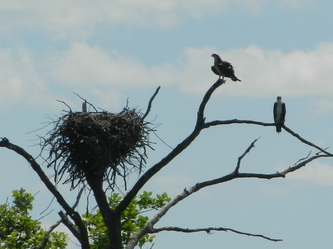
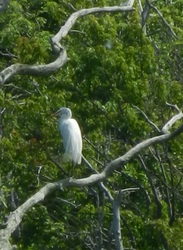
 RSS Feed
RSS Feed
